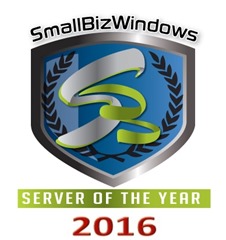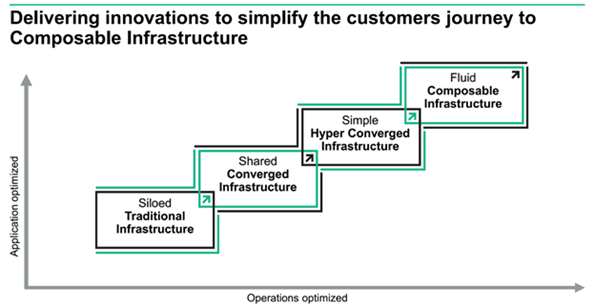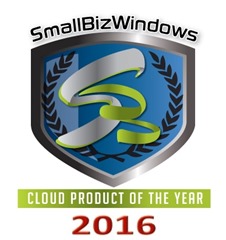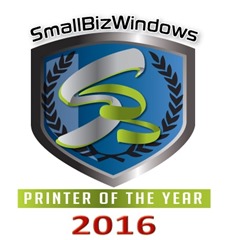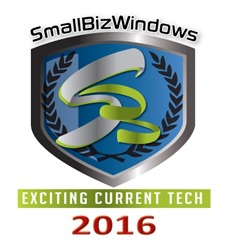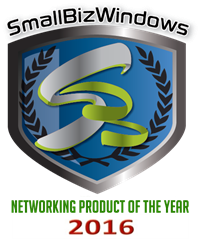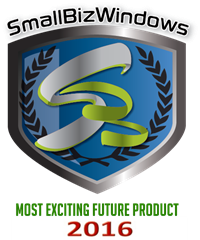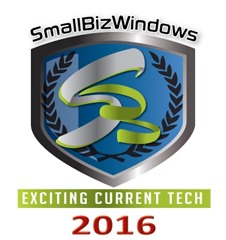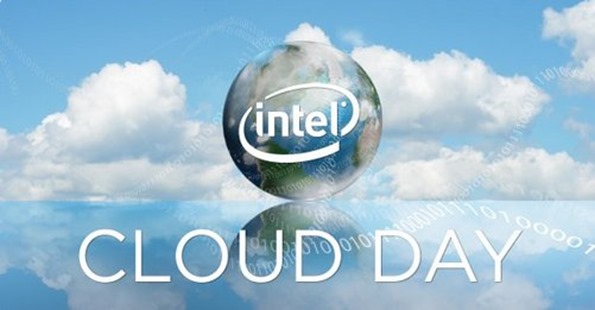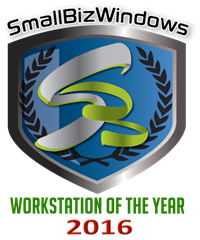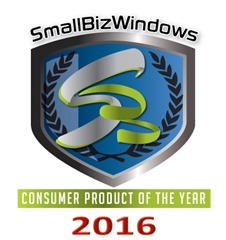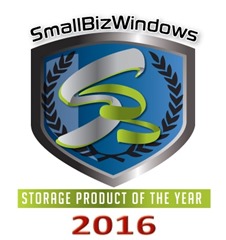I was at Intel Cloud Day which took place at the end of last month in San Francisco.
I believe this day was quite necessary.
The Cloud
Even if you strip apart all of the ‘cloud-washing’ going on, the fact remains that the cloud is here, now, and rather inevitable for all but the most secure, or the most mundane of tasks.
Right now, and except for extreme instances, Intel has a dominance not seen since the heydays of IBM’s mainframe hegemony. Most clouds are x86-based, and in them, Intel rules supreme. Intel’s Xeon CPUs are the class of cloud computing, without a doubt.
Though Intel leads in having its chips – both central processing units (CPUs) and chipsets – running an impressive majority of datacenters, that same dominance leads profit-envious firms to want to participate.
Witness, ARM.
While the thought of ARM chips running server-class workloads seems fanciful today, the truth remains that ARM might make a breakthrough one of these days that allows ARM to be the primary CPU vendor for datacenters, with Intel kicked out of that henhouse.
However, ARM has been nibbling on the heels of Intel. It is emboldened by the dominance it enjoys in the mobile space, and is making noises about scaling up into webscale-class CPUs.
Thankfully, Intel does not seem to be suffering from what that great sage of SMB computing, John Obeto II, calls ‘The Myopia of the Dominant Incumbency’.
Intel has been improving the products called out above, and also the peripheral components that help them. Intel’s Xeon chips have continually improved every year, largely following “Moore’s Law”.
What I want to see, is how Intel will be making clouds more accessible to VARs and enterprises for whatever solutions we aim to implement for our clients.
Intel Cloud Day, NASDAQ Entrepreneurial Center, San Francisco, California
The keynote is headlined by Diane Bryant, Senior Vice President & General Manager of the Data Center Group, Intel
Diane immediately lays down a fact: “The cloud has the potential to be more impactful than the PC”.
This is true. In today’s primarily mobile world, most, if not all data lives in a cloud somewhere. These days, just about everything we do is somehow connected to the web. If you live a mobile life, assume that almost 100% of your life resides outside the physical parameters of your mobile device.
I’m sure it comes as a surprise to non-technical folks that these apps are not powered by some kind of computer magic, or pixie dust. The sysadmins toiling thanklessly in datacenters around the world could use some luv and appreciation.
She follows on by reminding us that clouds now tend to be spread across private, public, hybrid, and across multiple cloud providers.
Even for me as a consumer of Microsoft assets, I find myself using other apps, services and whatnots from other providers on a daily basis. That is a fact of daily life today.
"Intel Cloud for All"
Intel’s proposition is to be “there”, in every conversation when clouds, private, public, and hybrid are mentioned.
In other words, they want to be the enabler of the next 10,000 clouds.
To reach there, they have identified three objectives:
-
Investments in the Cloud: they are going to have to standardize software defined infrastructures, using improvements there to drive efficiency and mitigate deployment woes.
-
Optimize the Cloud: look at the cloud today. The needlessly varied cloud infrastructures make the term ‘Balkanization’ seem optimistic. Structure is needed in order to optimize cloud across various workloads, not the other way around.
-
Align the industry to accelerate cloud deployments. Their own words, not mine. For which I wish them luck. It is a great ideal. I just don’t see how it could be pulled off. I hope I am proven wrong.
In order to do that, they have assembled an impressive list of global consumers of Intel's cloud offerings across several markets and verticals to help bring the goal to fruition.
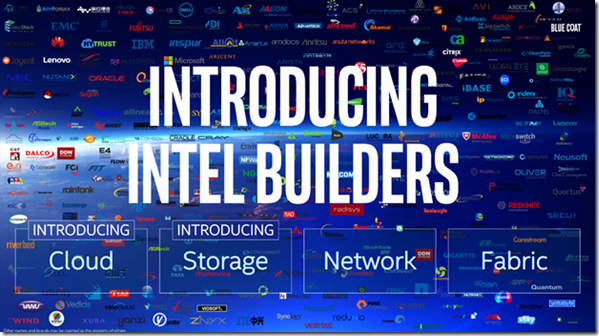
New Intel #Xeon, the E5-V4

To help make these plans come to life, Intel is seeding computing with two new products: the Intel Xeon E5-2600 V4 CPU series, and a datacenter-class (?) SSD family, the P3520/3320, and D3700/3600 SSDs.
The Intel Xeon E5-2600 V4
As we all know, Intel Xeons are the dedicated server parts Intel produces.
For this new rev, Intel has raised performance even higher. Compared to the previous gen CPUs, the E5-V4 series now contain up to 22 processing cores per CPU. Coupled with virtualization, this new chips are able to deliver up to a 40% increase in performance, while some security workloads can see a 70% performance gain.
While impressive, the star of these new CPUs seem to be the Intel Resource Director technology.
The images below show a simplified view of how Intel Resource Director works.

Intel Resource Director tech seems to have completely won over @NASDAQ, w/ potential for 4x datacenter efficiency


I will need ,ore information and more data on Intel Resource Director before I crown it. However, it is a very important development. And one that, no doubt, would be very welcome to datacenter architects and managers.
The new PCIe-based SSDs are optimized for high performance, with very low latency. Just right for datacenters and the cloud, I am told.Evidently, they are faster than SATA. Until Howard Marks (@DeepStorageNet) says so, a grain of salt for me for now.
Several partner case studies are trotted out.
The case study that made the most profound impact on me from was the one by Dr. Joe Gray from the Knight Cancer Institute at the Oregon Health & Science University where they are trying to create drugs targeted ad hoc to each individual, since, as they put it, each cancer, is microscopically different because of the minute mutations from victim to victim.
They are harnessing open source to do this.
In a nutshell, they basically have to create precision medicines, since every cancer is technically unique, based on the victim's distinct DNA
As profound, but in a very scary way, was the statement below:
Healthcare data is so informative and rich that previously anonymized patient PII can be easily de-anonymized
My takeaway: security has to be an intrinsic part of your infrastructure plans, datacenter or not!
One of the greatest barriers to nirvana in the cloud is the lack of standardization, across training, expertise, standards, certifications, and more.
Coincidentally, it was something I had some thought on shortly before this event. Please follow the link above to read the article on CIO.com
In Summary…
Intel is all in.
I came away from Intel Cloud Day 2016 with the realization that Intel understands the stakes involved here.
It just cannot produce faster, more powerful and/or more efficient CPUs, chipsets, and other components, then let the chips – no pun – fall wherever they may.
It has to lead several parties into the creation of a cohesive ecosystem that delivers coherent, quantifiable solutions that help drive further cloud adoption.
My only issue with all this is the reliance on OpenStack to deliver.
Personally, I have issues with a Hydra-headed organization composed of very vocal extremists who wage their little jihads as they try to steer their most-favored into being the standards. This is where I need a “Show Me”. (See the TV series “Fringe” for deciphering that term.)
Show me, OpenStack.
Apart from that, Intel is on to ‘A Good Thing’!
© 2002 – 2016, John Obeto for Blackground Media Unlimited

